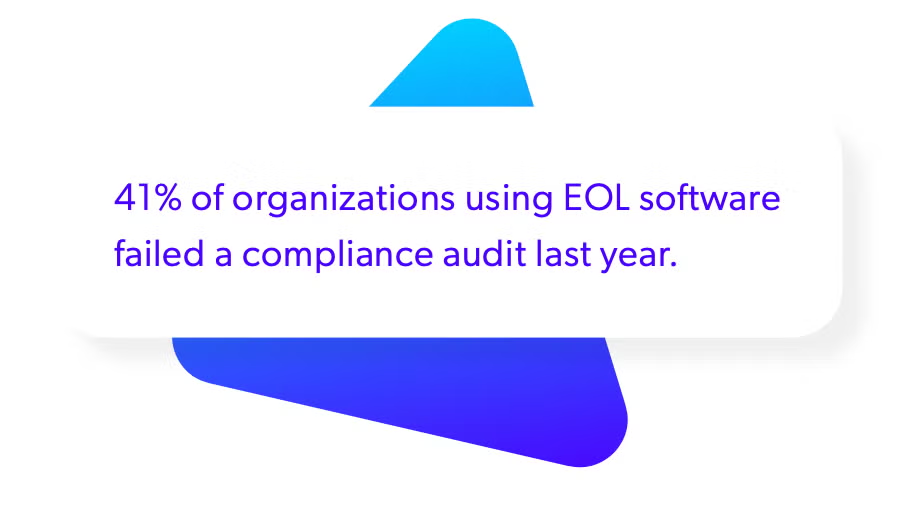Blog
April 10, 2025
In 2024, Perforce OpenLogic collaborated with the Open Source Initiative and the Eclipse Foundation to launch a global survey about the use of open source software (OSS) in organizations. We invited open source users to tell us about OSS adoption and culture at their organizations — what technologies they rely on, how they are investing budget and resources, and the challenges they encounter. As always, we received responses from folks all over the world, working in different industries, for companies large (more than 5,000 employees), small (under 20 employees), and everything in between.
The results of that survey, along with expert analysis, are now available in the 2025 State of Open Source Report. In this blog, I'll touch on some of the major takeaways, trends, and themes that emerged from this year's dataset, and what they indicate about the future of open source.
Table of Contents
OSS Adoption Is Still Surging
96% of the respondents increased or maintained their use of OSS, with 26% of them reporting a significant increase in usage. Cloud-native and container technologies are receiving the most investment, followed closely by open source databases and data technologies, and programming languages (which are particularly a priority for smaller organizations, which suggests they are building solutions in-house vs. using out-of-the-box software).
Has Your Organization Increased the Use of Open Source Software Over the Last Year?
 Back to top
Back to top
No License Cost and Overall Cost Reduction Is Driving Adoption
This year, 53% of respondents cited reducing cost as their top reason for choosing OSS, a big increase from 37% last year (+43% YoY). Economic uncertainty continues to motivate businesses to keep costs low and predictable, and many have discovered that adopting open source is the best way to do that. Other reasons that made it into the top five:
- To reduce vendor lock-in (33%)
- Open standards and interoperability (28%)
- Stable technology with community long-term support (24%)
- To reduce development or maintenance costs (22%)
Back to topWant to Watch a Recorded Version of Our Findings?
Then check out our on-demand webinar exploring the State of Open Source in 2025. Our experts discuss and offer actionable insights on the trends, challenges, and technologies shaping the future of open source, helping you stay ahead in an increasingly competitive landscape.
Security, Compliance, Maintenance, and Personnel Are the Biggest Challenges
We asked respondents to assign a score between 1 and 5 to some known OSS support challenges, where 1 = not challenging and 5 = very challenging. This table shows the challenges where more than half of our survey population assigned a score above 3:

These findings make sense in light of the next question we asked: "In cases where you are using the proprietary version of open source-based software, what is keeping you from switching to the open source technology?"
The top answer, with 44%, was "professional support and maintenance." In other words, organizations may have to pay for commercial versions that include technical support and LTS if they don't have the internal resources (including skilled personnel) to keep up with updates and patches and meet their compliance requirements on their own.
Want More Open Source Insights and Analysis?
Download the full State of Open Source Report for 30+ pages of data on open source technologies: Linux distros, frameworks, databases, runtimes, DevOps tooling, and more!
Back to top
EOL Software Makes Failing a Compliance Audit 3x More Likely
Only 14% of organizations said they failed a compliance audit last year. However, that percentage nearly tripled to 41% when we just looked at respondents who indicated that they are still using EOL software like CentOS and AngularJS.
 Back to top
Back to top
Confidence in Big Data Management Is Low
We dedicated a section of the report this year to explore Big Data trends and concerns. Since large datasets are used to train AI models, it's an exciting space to watch. What we found, interestingly, is a lack of confidence in the management of Big Data technologies.

47% gave a score of 1 or 2 (out of 5) to describe their confidence in the administration of their Big Data stacks. These technologies are notoriously complex and skills gaps are part of the problem here — more than 75% selected "personnel proficiency and experience" or "lack of personnel" as the most challenging aspect of working with open source data technologies.
Back to topFinal Thoughts
On a positive note, the report contains some encouraging signs of growing open source maturity and best practices among organizations. For instance, 59% of respondents said that they scan open source software for vulnerabilities, and 35% have open source security, compliance, or governance policies. Those numbers are both up from last year's report. Even better, 38% said that their organizations contribute to open source projects or foundations. Those contributions could be financial or in the form of code or other service to the community, but regardless, more than a third are giving back in some way.
The State of Open Source Report is a valuable resource for anyone — from engineers to CTOs — interested in understanding how the open source landscape is changing so they can be more strategic about OSS adoption, support, and end-to-end stack management.
Additional Resources
- Webinar - The State of Open Source in 2025
- Press Release - 2025 State of Open Source Report
- Archive - Previous State of Open Source Reports
- Blog - Open Source Trends and Predictions for 2025
- Blog - 5 Reasons Why Companies Choose OpenLogic for OSS Support
